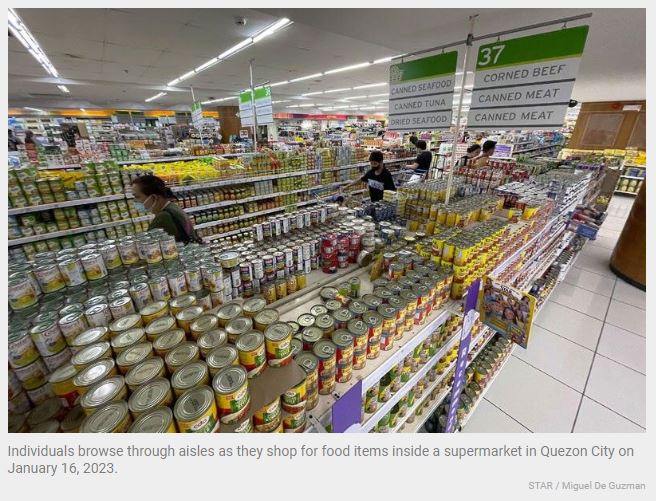Philippines: High rates, weak global demand to tame inflation – Moody’s unit
MANILA, Philippines — Moody’s Analytics sees inflation in Asia Pacific gradually slowing down this year on the back of elevated borrowing costs and weakening global demand.
In its latest Asia Pacific Chartbook titled “What Goes Up, Must Come Down,” the research arm of the Moody’s Group said that global inflation has likely peaked at the end of last year, jumping to about 8.7 percent through 2022.
Moody’s Analytics said inflation in Asia Pacific countries is projected to ease to 2.8 percent this year and further to 2.5 percent next year from about 3.6 percent last year.
“All in all, we expect the combination of easing supply constraints and biting borrowing costs to push inflation lower in the Asia-Pacific region this year. But it will be a gradual process,” it said.
It added that price pressures continue to pinch households and businesses around the world.
According to Moody’s Analytics, inflation has already passed its peak in the region as it is now trending lower in Cambodia, India, Malaysia, Singapore, South Korea, and Thailand.
However, it pointed out that other countries in the region are stuck on the inflation train, with the consumer price index in the Philippines hitting a 14-year high of 8.1 percent, and in Australia reaching 8.4 percent in December.
Inflation in the Philippines accelerated to 5.8 percent last year, exceeding the two to four percent target range of the Bangko Sentral ng Pilipinas (BSP), from 3.9 percent in 2021 due to surging food and accommodation costs.
To tame inflation and stabilize the peso, the BSP Monetary Board raised key policy rates by 350 basis points to a 14-year high of 5.50 percent last year from an all-time low of two percent.
“Much of the region’s price pressures initially came from constrained supply chains. As the world came to a standstill through 2020 and 2021, supply snarls weighed on global production and disrupted the transport of goods. But much of these pressures have passed,” Moody’s Analytics said.
As prices jumped as economies and demand bounced back last year, Moody’s Analytics said central banks pushed borrowing costs skyward in a desperate attempt to tame domestic demand.
“In the Asia-Pacific region, the Reserve Bank of New Zealand has led the charge, hiking rates a cumulative 400 basis points since October 2021. (The) BSP has likewise gone hard to combat inflation, hiking rates by 350 basis points, while the Reserve Bank of Australia has pushed rates 300 basis points higher since May 2022,” it added.
The BSP matched the aggressive rate hikes delivered by the US Federal Reserve point by point to maintain a healthy interest rate differential and stabilize the peso that slumped by as much as 15.7 percent to hit an all-time low of 59 to $1 last October.
BSP Governor Felipe Medalla believes that inflation already peaked last December and is on its way to ease back to the two to four percent target range by the end of the third quarter or early in the fourth quarter this year.
Medalla also expects inflation to fall below two percent early next year.
To reanchor inflationary expectations, Medalla sees the need to further tighten monetary policy with a 25 to 50 basis point hike in the first rate-setting meeting of the Monetary Board for this year scheduled on Feb. 16.
Based on its latest assessment, the central bank expects inflation to ease to 4.5 percent this year, still above the BSP’s target range, and to 2.8 percent next year.
Source: https://www.philstar.com/business/2023/02/03/2242103/high-rates-weak-global-demand-tame-inflation-moodys-unit


 English
English




